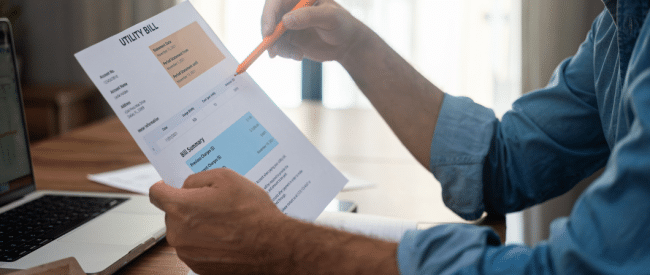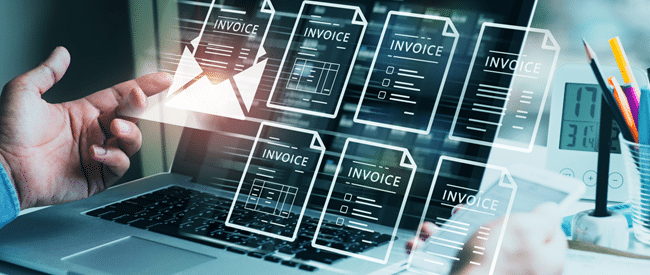Despite low unemployment and soon-to-be-implemented student loan relief, other economic forces including persistent inflation are making it tougher for more Americans to meet their financial obligations. If consumers are forced to choose which bills to pay each month, companies can improve the likelihood they will make the cut if their billing and payments process is faster, easier, and more convenient for their customers.
The key is technology to track and fulfill how each consumer wants to interact, with growing numbers strongly preferring digital channels especially email, texting and online self-service account management and payment portals. Many companies can move quickly to engage consumers based on their preferences, from mail to mobile, with hosted managed services that integrate customer communications management (CCM) and electronic bill presentment and payments (EBPP) cloud software with streamlined implementation and excellent ongoing customer support.
Engaging consumers based on their preferred communication channel is especially important to collections firms. Collectors are facing rapidly changing rules for how they are allowed to reach out about unpaid bills to consumers who increasingly don’t answer their phones or open mail. Our new white paper, Gain Control of Your Omnichannel Collections Communications, explains how accounts receivable management companies are taking advantage of cloud CCM technology to add digital communications options, expedite content changes required for regulatory compliance and improve revenue recovery.
Strong financial headwinds
Worrisome signs point to a pending spike in late payments and delinquent debt:
- Serious delinquent consumer debt returned to pre-pandemic levels by the end of June, according to TransUnion.
- The number of consumers with credit cards and personal loans has reached record highs, driven by an increase in loans to non-prime consumers, TransUnion reported in August.
- Mortgage, credit card and auto loan debt is steadily increasing, pushing total household debt to more than $16 trillion in the second quarter of 2022, according to the Federal Reserve Bank of New York.
- The number of Americans with subprime credit cards and car and personal loans that are at least 60 days late has been rising for months, according to a Wall Street Journal article examining Equifax data.
- In July, 18% of consumers weren’t paying their bills in full, according to McKinsey.
Businesses need to take action
Faced with mixed economic signals, companies are rightly focusing on cost reduction. Maybe even more important is the other side of the equation, which is increasing consumer revenue capture through efficient billing and payments processes.
There’s no better time than now to make strategic investments that build resilience, customer preference and loyalty and market differentiation. “Companies that make bold moves during uncertain times generate greater returns in future business cycles,” according to McKinsey.
In billing and payments, that means companies need to prioritize new ways to reach and engage consumers. Revenues for today and in the future are on the line:
Mobile is transforming bill payment habits of all age groups, according to 1H 2022 ACI Speedpay Pulse consumer survey.
- 58% used their mobile phones to make a payment at least once a week in 2022 compared to 46% in 2021.
- 38% are more willing to adopt new channels and methods for faster payment processing compared to 31% last year.
- 1 in 3 consumers had to make an urgent or same-day payment in this past year, up from 1 in 5 last year.
- 20% prefer bill pay reminders via texting vs. 15% in 2021.
Digital options build loyalty and can drive faster payments. Take healthcare, where the billing and payments experience can determine satisfaction, loyalty and willingness to pay, more so than the provider care itself. The 2022 Trends in Patient Communications Report released in August from Salucro Healthcare Solutions found:
- 56% of consumers prefer digital communications over traditional mail.
- 50% of patients would pay more quickly if their billing notification preferences were used.
- 42% say choosing the communication channel is most important.
- 41% of patients would consider switching providers due to a poor billing experience.
Build resilience and agility
Omnichannel CCM and EBPP platforms make it simple to respond to these consumer changes and personalize communications and payments. Billers can develop and deliver any combination of traditional paper and digital options preferred by each consumer. Companies also can establish EBPP sites for self-service account management, including allowing consumers to view and download billing statements and other documents, set up automated payments and payment plans, and use a variety of payment methods from ACH and credit cards to PayPal and AmazonPay.
Cloud CCM and EBPP technologies are cost-effective and scalable, digitally transforming operations through automation and can enhance the customer experience. As more consumers adopt digital, companies also save on escalating postage, paper and printing costs while minimizing any impact from paper shortages.
Given the uncertain times, investing in a better billing and payment experience for billers and customers alike seems like a rare sure bet.
Connect with us to learn more about our Expresso CCM platform.







